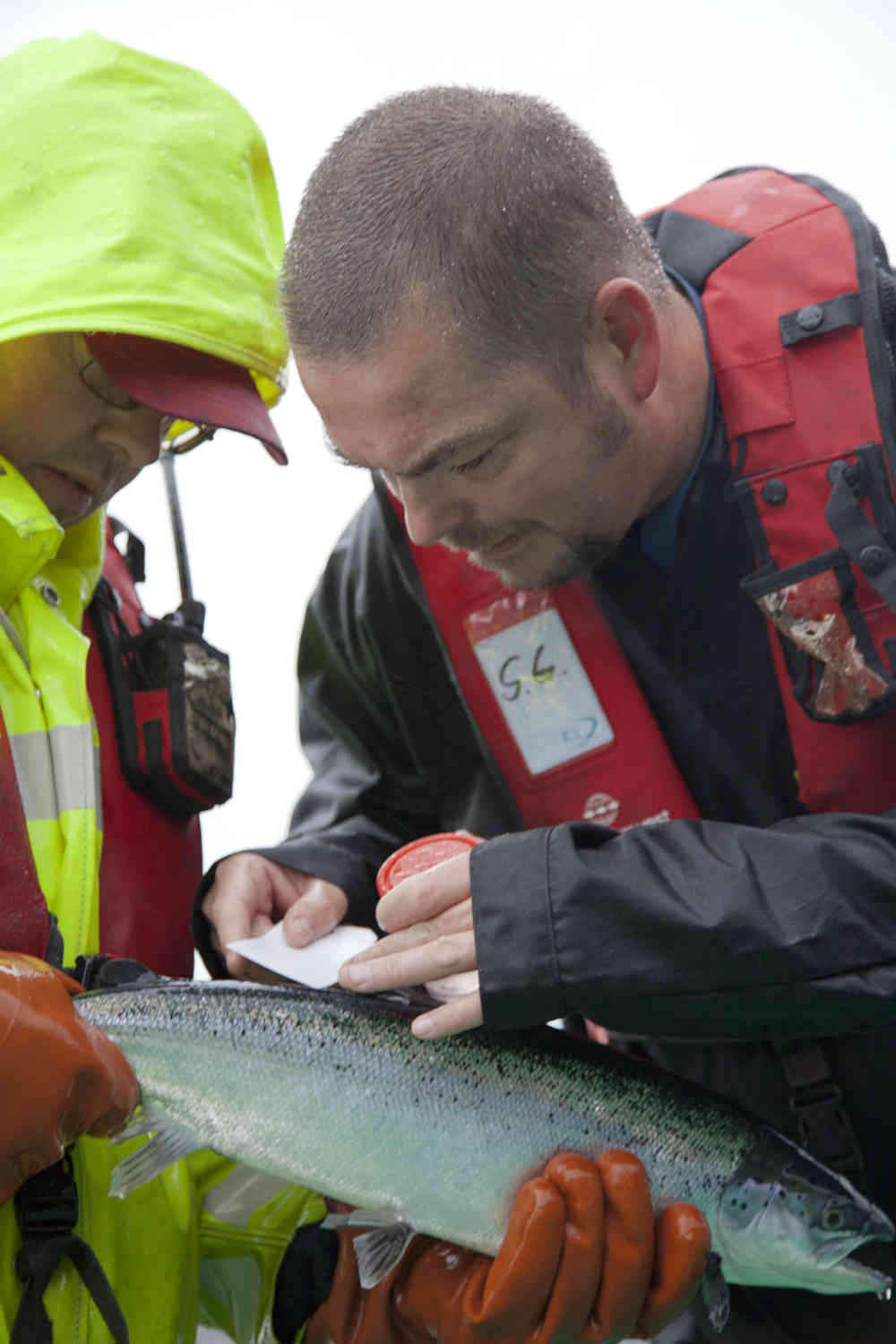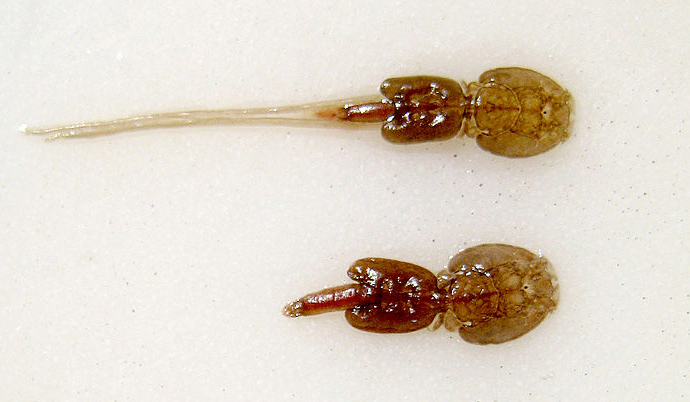This pest is a natural parasite of salmon in salt water, and can be found in all sea areas of the northern hemisphere. It damages the fish by feeding on their mucous, skin and blood.
That reduces their physical wellbeing, while making the fish more vulnerable to other infections caused by bacteria or fungi.
The louse breeds throughout the year, but most swiftly in the summer when the sea is warm. It weakens as salinity declines, and falls off salmon and sea trout when these swim into fresh water in rivers.
While the louse occurs naturally, its numbers multiply when many hosts are available. That condition has been provided by the expansion in Norwegian fish farming.
Excessive numbers of lice are also a threat to wild salmon, and particularly to the smolts when these migrate out to sea in the spring.
Every year in that season, Norwegian fish farmers are required to undertake collective treatment to ensure that the level of lice is as low as possible when the smolts set off.
Sea trout live in areas where aquaculture takes place, and are also vulnerable to excessive levels of lice. They withdraw back to the rivers to get rid of the parasites in fresh water.

The Norwegian Food Safety Authority inspects fish farms along the whole coast.
The louse can also present a threat to farmed salmon. If it becomes too prevalent in a farm, it can cause sores and other damage to the fish which lay them open to infections.
That creates problems for the wellbeing of the stock, which is reinforced by the amount of handling required to count and remove the lice.
Limits on lice
Norwegian regulations specify that there must be fewer than 0.5 adult female lice per fish on average in a facility. The fish farmer is responsible for keeping numbers below that limit, and failure to do so may mean the stock must be slaughtered.
The Norwegian Food Safety Authority can permit a higher louse limit for broodstock during the last half-year while the fish are in the sea. It can also specify different limits in zones.
Fish farmers are required to count the number of lice per fish and report this figure to the authority along with treatment measures and the sea temperature. Such reporting is weekly when the water exceeds 4°C and fortnightly below that temperature.
Combating lice
The salmon louse is tackled with medicinal treatments, the use of cleaner fish and mechanical delousing.
Medicines are and have been the commonest way of dealing with lice. They are administered either as a feed supplement or in a bath. The latter approach involves either enclosing the cage in a impermeable tarpaulin or giving treatment on the well boat.
Cleaner fish eat the lice sitting on the farmed fish. This is most effective with smaller salmon and when the water is not too cold. The cages must be clean, or the wrasses used will consume marine fouling on the nets instead.
Mechanical delousing has become increasingly common in recent years because the salmon louse has developed resistance to medication.
Examples of such new treatment methods include the use of lasers, brushing or spraying with fresh or warm water. In addition, lice skirts are installed as a preventive measure.
Resistance
The main reason for today’s problems with salmon lice are that the parasites have developed greater resistance to the medicines applied.
This occurs after repeated delousing and is a natural process, since the individuals which can best cope with the medicine are the ones which survive each time. They have properties which allow them to live through the treatment and continue to breed.
The problem is then that the medicines work poorly or not at all, and the fish farmer fails to get the lice level down.
Treatment goal
Treatments for dealing with lice aim to prevent and limit the damage caused by these parasites to farmed and wild salmon and sea trout. Another goal is to prevent the development of resistance to the delousing medicines.
These objectives are spelt out in Norway’s regulations on salmon lice. Fish farmers must comply with the rules, and the Food Safety Authority checks that they do.
Official action on salmon lice
The Food Safety Authority’s job is to supervise the aquaculture sector to ensure that the goals for salmon lice treatment are met.
It does this by monitoring that the fish farmers keep the lice level at their facilities below the specified limit, that they count lice, and that they take the necessary measures.
The authority also ensures that the fish farmers have plans and emergency preparedness measures in place to keep the level down.
In addition, it checks that care is taken to maintain the wellbeing of farmed fish. This presents a challenge, since treatment for lice infection involves a good deal of handling for counting and delousing.
If a fish farmer fails to keep the level of lice infection below the specified limit, the authority can order them to adopt countermeasures or to slaughter the fish.
Localities which have seen the lice level exceeded for extended periods may be ordered to reduce production.
Topic pages on salmon lice at the Norwegian Institute of Marine Research
